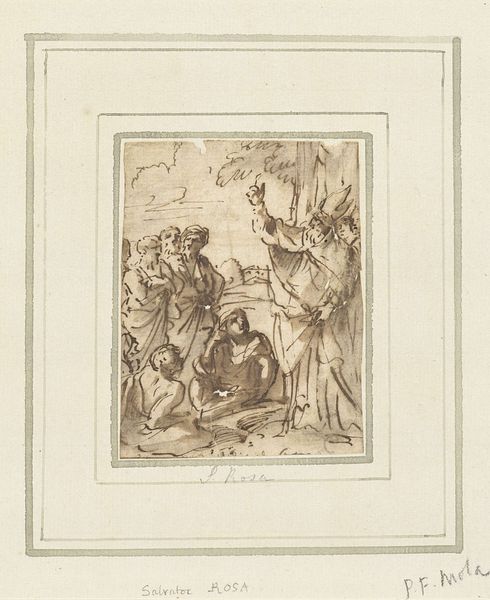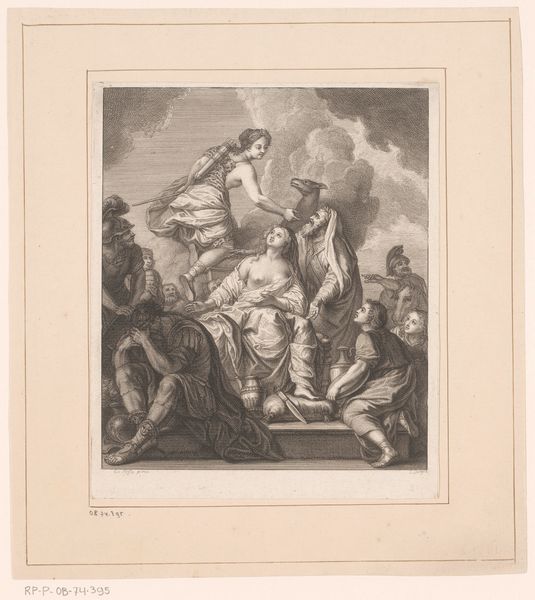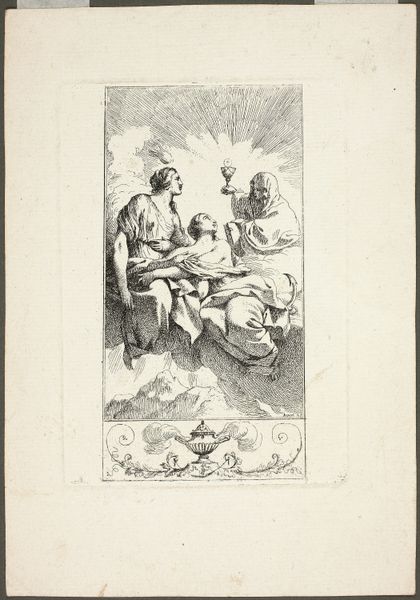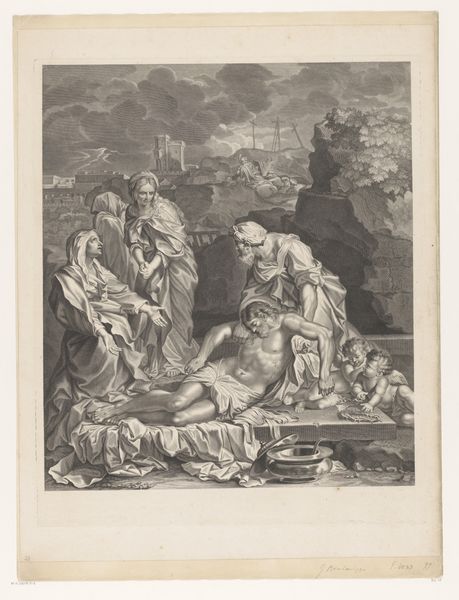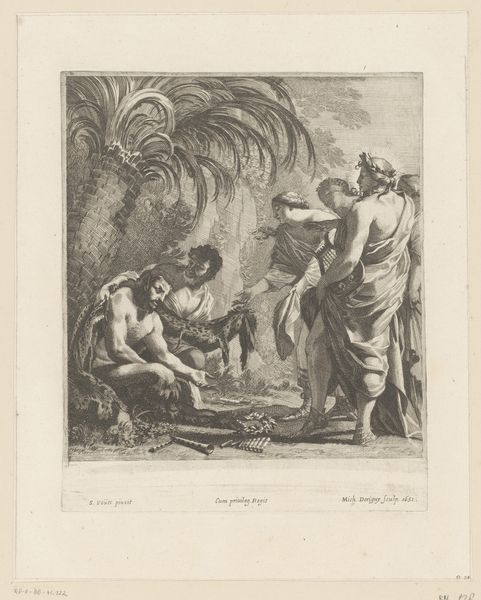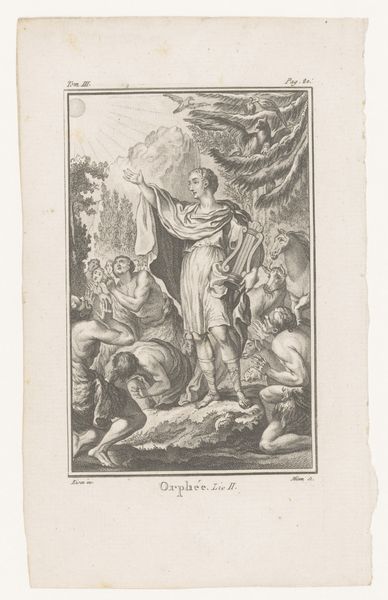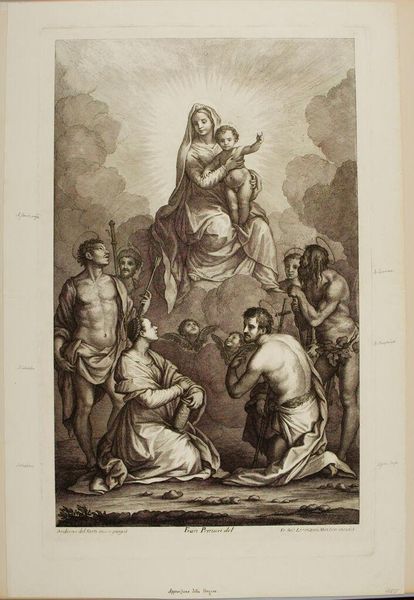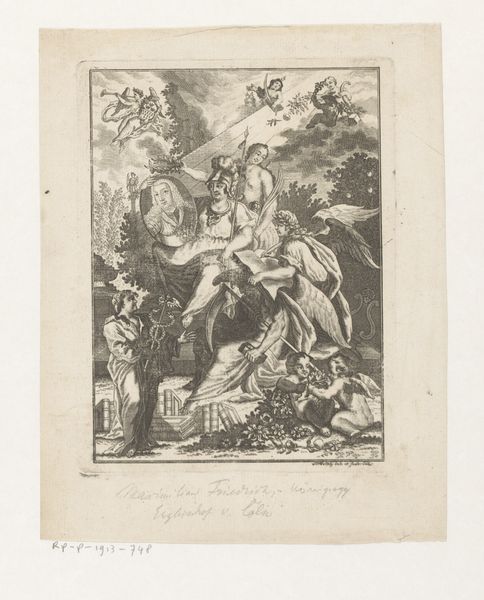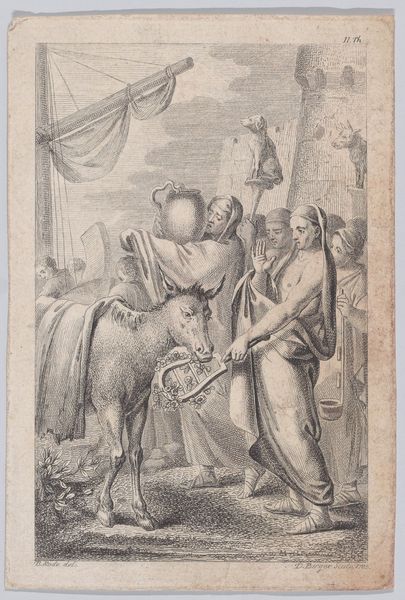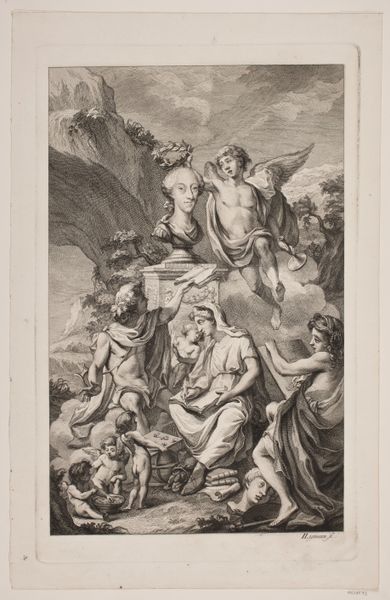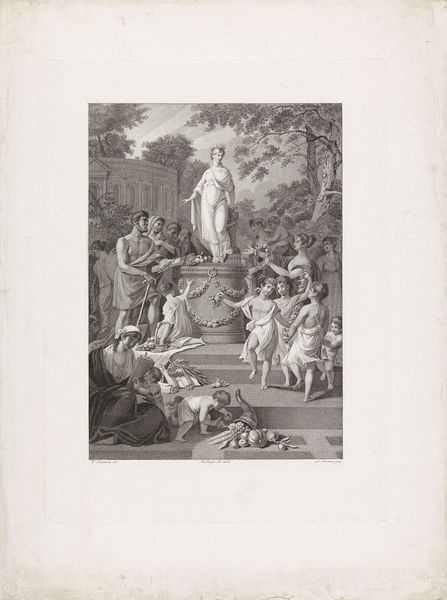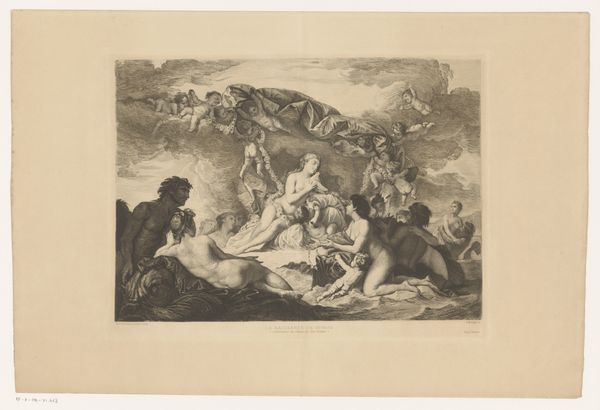
drawing, print, ink, engraving
#
drawing
#
neoclacissism
#
ink drawing
#
allegory
#
narrative-art
# print
#
figuration
#
ink
#
history-painting
#
academic-art
#
engraving
Dimensions: 8 3/4 x 6 1/8 in. (22.2 x 15.6 cm)
Copyright: Public Domain
This drawing, "The Sacrifice of Iphigenia," was made by Jean Michel Moreau the Younger in the 18th century. It’s rendered in ink on paper, a method of production that allowed for the easy reproduction and distribution of images during that period. Look closely and you'll see that the artist employed fine lines and careful shading to create depth and drama. The ink, applied with precision, conveys not only the narrative, but also the cultural significance of the story, drawn from classical mythology. The choice of ink, a readily available material, speaks to the democratization of art during the Enlightenment, where printed images made art and stories accessible to a wider audience. This work's meaning isn’t just in its depiction of a dramatic scene, but also in its status as a commodity, produced and consumed within a burgeoning print market. By considering the materials and means of production, we recognize how the artwork participates in the social and economic currents of its time, blurring the boundaries between fine art, craft, and commerce.
Comments
No comments
Be the first to comment and join the conversation on the ultimate creative platform.
